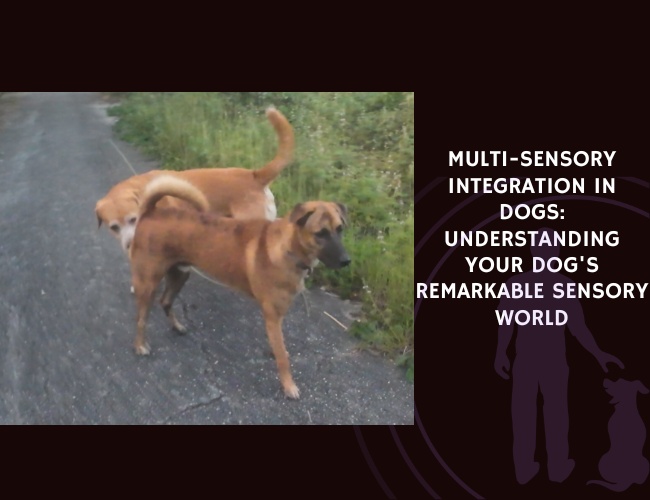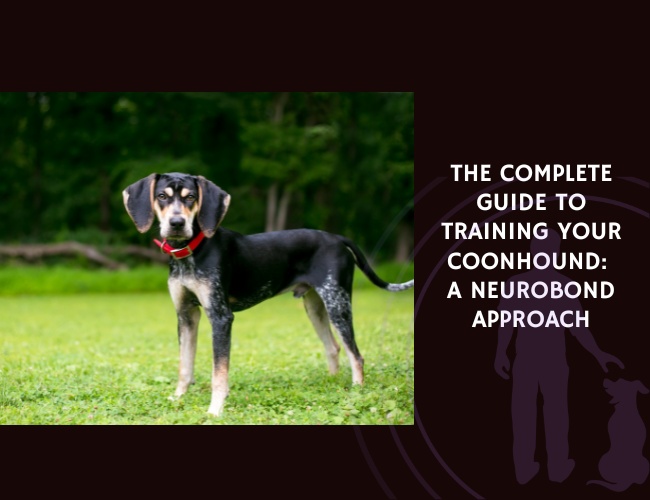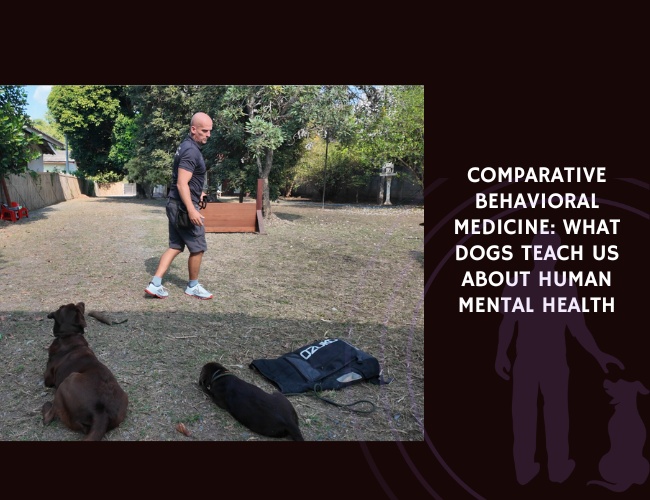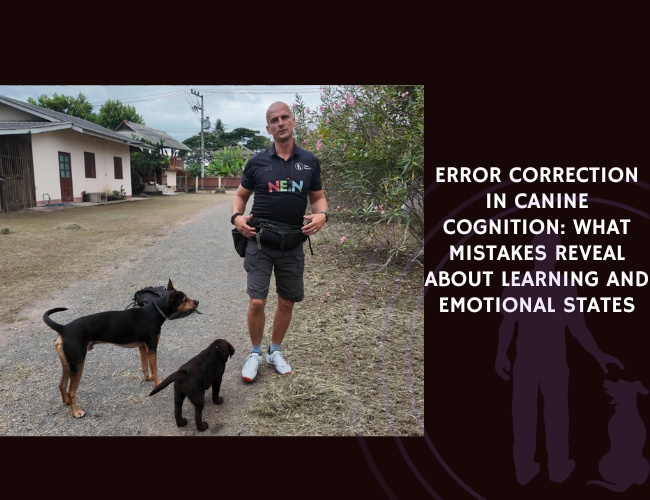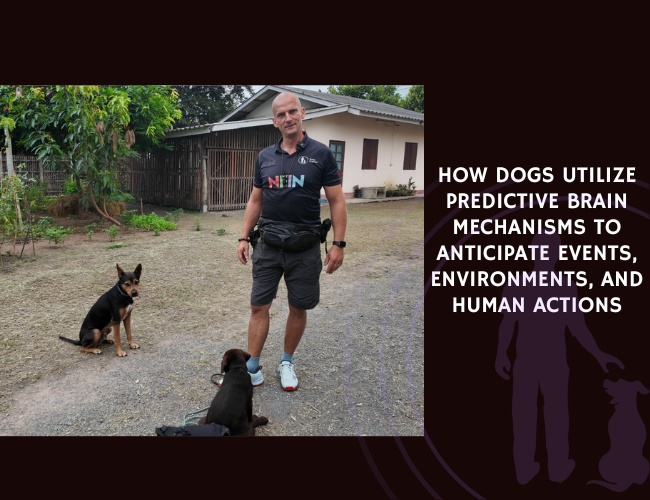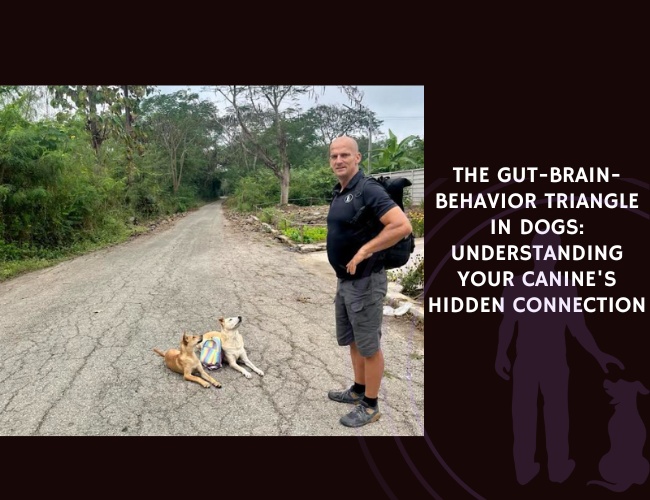Introduction: Understanding Your Dog’s Sensory Symphony
Have you ever wondered how your furry friend perceives the world so differently from you? While we humans rely heavily on vision, dogs experience reality through a rich tapestry of interconnected senses—creating a multi-dimensional understanding that shapes every tail wag, bark, and decision they make. This fascinating sensory symphony involves the seamless integration of sight, smell, and sound, working together in ways that might surprise you.
Understanding how your dog’s senses work together isn’t just academically interesting—it’s the key to better training, stronger bonds, and a happier life for your four-legged companion. Let us guide you through this remarkable world where a simple walk becomes a multi-sensory adventure, and where understanding these connections can transform how you interact with your beloved pet. 🐾
The Architecture of Canine Perception
How Dogs Experience Reality Differently Than Humans
Your dog lives in a sensory world that’s both familiar and alien to us. While you might notice the colorful flowers on your morning walk, your dog is processing layers of scent information from dogs who passed by hours or even days ago. This isn’t just a difference in sensitivity—it’s a fundamental difference in how sensory information is prioritized and processed.
The Sensory Processing Hierarchy reveals something remarkable: dogs don’t just have better noses than us; their entire brain is wired to prioritize different sensory inputs. The olfactory bulb in a dog’s brain is proportionally 40 times larger than ours, while their visual cortex occupies a smaller percentage of brain real estate. This means your dog literally thinks in smells the way we think in images.
Cross-Modal Perception is where things get truly fascinating. When your dog hears the rustle of a treat bag, they’re not just processing sound—their brain immediately activates olfactory memories and visual expectations. This instantaneous sensory fusion creates a richer, more complete understanding of their environment than any single sense could provide alone.
The Neurological Orchestra Behind the Scenes
Deep within your dog’s brain, an intricate network of neurons orchestrates this sensory ballet. The thalamus acts as a grand central station, routing sensory information to specialized processing centers while the limbic system adds emotional coloring to every sensation. Did you know that when your dog sniffs another dog’s scent mark, their amygdala—the brain’s emotional center—lights up like a Christmas tree?
The Integration Centers work tirelessly to blend these inputs into coherent experiences. The superior colliculus, for instance, helps your dog instantly turn toward interesting sounds while simultaneously preparing their visual system to process what they’ll see. This split-second coordination happens thousands of times during a simple game of fetch.
Neuroplasticity and Learning means your dog’s sensory integration actually improves with experience. Puppies must learn to coordinate their senses, while senior dogs develop compensatory strategies when one sense begins to fade. This adaptability showcases the remarkable flexibility of the canine nervous system.
Sensory Dominance Hierarchies: When Each Sense Takes the Lead
Understanding Context-Dependent Sensory Leadership
Your dog’s brain constantly adjusts which sense takes priority based on the situation at hand. This dynamic shifting isn’t random—it follows predictable patterns that you can learn to recognize and work with.
Olfactory Dominance Situations occur most frequently during:
- Tracking and searching activities
- Meeting new dogs or people
- Investigating novel environments
- Food-related contexts
During these moments, your dog’s visual and auditory systems don’t shut off—they shift into supporting roles, providing contextual information that enhances olfactory processing. You might notice your dog’s eyes unfocus slightly when they’re deep in scent investigation, a visible sign of this sensory reallocation.
Visual Dominance Scenarios emerge when:
- Playing with moving toys
- Reading human body language and facial expressions
- Navigating familiar spaces at speed
- Responding to hand signals during training
Here’s something fascinating: breeds developed for visual hunting, like sighthounds, show stronger visual dominance even in mixed-sensory situations. This inherited trait influences not just what they notice, but how they think about and interact with their world.
Auditory Priority Moments typically include:
- Responding to verbal commands
- Detecting approaching dangers
- Localizing hidden toys or treats that make noise
- Social communication with other dogs
The Flexibility Factor
What makes dogs remarkable is their ability to rapidly shift between these dominance patterns. Watch your dog during a walk—they might start with nose-to-ground olfactory investigation, suddenly switch to visual tracking of a squirrel, then pivot to auditory focus when hearing another dog bark. This flexibility isn’t just reactive; it’s predictive, with your dog’s brain anticipating which senses will be most useful based on subtle environmental cues.
Breed Variations in Sensory Processing: Nature’s Specialized Designs
The Genetic Blueprint of Perception
Centuries of selective breeding haven’t just shaped how dogs look—they’ve fundamentally altered how different breeds perceive and process sensory information. These variations run deeper than you might expect, affecting everything from the density of scent receptors to the structure of the eye itself.
Scent Specialists: Breeds like Bloodhounds and Beagles possess up to 300 million scent receptors (compared to our mere 6 million), but it’s not just about quantity. Their brain structure shows enlarged olfactory processing regions and enhanced neural pathways connecting scent to memory and decision-making centers. When you see a Bloodhound working a trail, you’re witnessing the result of both anatomical and neurological specialization.
Visual Virtuosos: Sighthounds like Greyhounds and Whippets have evolved a different sensory profile entirely. Their eyes are positioned to provide a 270-degree field of vision (compared to 250 degrees in other breeds), and they possess a higher concentration of motion-detecting cells in their retinas. This means a Greyhound can spot a moving rabbit at distances that would leave a Bloodhound squinting in confusion.
Auditory Experts: Breeds developed for specific working roles show fascinating auditory adaptations. German Shepherds, for instance, can detect sounds at frequencies up to 65,000 Hz (humans top out around 20,000 Hz) and can pinpoint sound sources with remarkable accuracy. This isn’t just better hearing—it’s specialized processing that allows them to filter relevant sounds from background noise more effectively.
How Breeding Purpose Shapes Sensory Integration
Herding Breeds and Multi-Sensory Coordination: Border Collies and Australian Shepherds showcase perhaps the most sophisticated sensory integration among dog breeds. Their work requires simultaneous processing of visual cues (watching sheep movement), auditory signals (handler whistles), and spatial awareness. Brain imaging studies reveal these breeds have enhanced connections between sensory processing regions, allowing for rapid, coordinated responses to multi-sensory inputs.
Terriers and Selective Attention: These determined hunters demonstrate remarkable ability to maintain sensory focus despite distractions. When a Jack Russell locks onto prey scent, their brain actively suppresses irrelevant sensory input—a phenomenon called “sensory gating.” This explains why your terrier might seem to “go deaf” when chasing a squirrel!
Companion Breeds and Social Sensory Processing: Breeds like Cavalier King Charles Spaniels and Pugs have been selected for sensitivity to human social cues. They show enhanced ability to integrate visual facial recognition with vocal tone interpretation, making them exceptional at reading human emotions. This specialized integration helps explain why these breeds often seem so in tune with their owners’ feelings.

Training Implications: Harnessing Multi-Sensory Learning
The Science of Multi-Sensory Training
When you combine sensory cues during training, something magical happens in your dog’s brain. Neural pathways strengthen through a process called “multi-sensory enhancement,” where the brain creates more robust memories when multiple senses are engaged simultaneously. This isn’t just theory—it’s a practical tool that can transform your training results.
The Power of Redundant Cues: Teaching your dog to respond to both a verbal “sit” command and a hand signal doesn’t just give you options—it creates stronger neural pathways for the behavior. Dogs trained with multi-sensory cues show 40% better retention after six months compared to those trained with single-modality cues. The redundancy acts as a neural insurance policy, maintaining the behavior even if one sensory channel becomes less reliable.
Sensory Scaffolding Technique: Start with your dog’s dominant sense for the specific context, then layer in additional sensory cues. For example:
- Begin with a treat lure (olfactory/visual)
- Add a verbal command (auditory)
- Incorporate a hand signal (visual)
- Include a touch cue if appropriate (tactile)
This scaffolding approach respects your dog’s natural sensory preferences while building robust, multi-channel communication.
Practical Multi-Sensory Training Strategies
The Three-Channel Recall Method revolutionizes one of the most important commands:
- Auditory: Use a unique recall word or whistle
- Visual: Add a distinctive arm signal or body posture
- Olfactory: Initially practice with a special treat scent trail
By engaging all three primary senses, you create a recall response that works in various conditions—when your dog can’t see you clearly, when it’s too noisy to hear well, or when they’re highly distracted.
Environmental Enrichment Training uses the environment itself as a training tool. Set up courses that require your dog to:
- Follow scent trails to find hidden toys (olfactory challenge)
- Navigate obstacles using visual depth perception (visual processing)
- Respond to directional sound cues (auditory localization)
This approach doesn’t just teach specific behaviors—it enhances your dog’s overall sensory integration abilities, making them more adaptable and confident in novel situations.
Distraction Proofing Through Sensory Loading: Gradually increase sensory complexity during training:
- Week 1: Quiet indoor space, minimal distractions
- Week 2: Add background music or TV sounds
- Week 3: Include olfactory distractions (food smells, other dogs’ scents)
- Week 4: Move to visually complex environments
- Week 5: Combine all sensory challenges
This progressive approach builds your dog’s ability to maintain focus despite competing sensory inputs—a crucial skill for real-world reliability.
Neurological Pathways: The Hidden Infrastructure of Behavior
The Journey from Sensation to Action
Every time your dog responds to a command or reacts to their environment, an incredible neurological journey unfolds in milliseconds. Understanding this journey helps explain why some behaviors are instant while others require conscious thought, and why emotional states so profoundly affect your dog’s responses.
The Rapid Response Highway: Some sensory-behavioral connections bypass higher thinking entirely. When your dog instantly turns toward a sudden sound, the auditory information travels directly from the ear to the brainstem’s superior colliculus, triggering an orienting response before the conscious brain even registers what happened. This ancient pathway, shared with their wolf ancestors, ensures survival-critical responses happen at maximum speed.
The Thoughtful Processing Route: More complex decisions engage the cerebral cortex, where sensory information undergoes detailed analysis. When your dog is deciding whether to approach a new person, visual information about body language, olfactory cues about emotional state, and auditory processing of voice tone all converge in the frontal cortex. This integration takes longer but produces more nuanced, appropriate responses.
The Emotional Modifier Circuit: The limbic system adds emotional coloring to every sensory experience, fundamentally shaping behavioral responses. A dog who’s had negative experiences with loud noises doesn’t just hear thunder—their amygdala immediately floods the system with stress hormones, affecting how all other sensory information is processed. This is why anxious dogs often seem to “overreact” to mild stimuli; their emotional circuits are amplifying sensory inputs.
Sensory Integration Disorders and Behavioral Challenges
Just as in humans, dogs can experience challenges with sensory integration that manifest as behavioral issues. Recognizing these patterns can transform how you understand and help your dog.
Sensory Overload Syndrome occurs when dogs cannot effectively filter or prioritize sensory information. Signs include:
- Excessive reactivity to normal stimuli
- Difficulty settling in new environments
- Inability to focus during training
- Stress behaviors in seemingly calm situations
These dogs aren’t being “difficult”—their nervous systems are struggling to organize sensory input into coherent information. Targeted desensitization protocols that address specific sensory channels can provide remarkable relief.
Sensory Seeking Behaviors indicate understimulation in specific sensory channels:
- Excessive sniffing or licking (olfactory/gustatory seeking)
- Constant motion or inability to settle (vestibular/proprioceptive seeking)
- Excessive barking or vocalizing (auditory feedback seeking)
Understanding these as sensory needs rather than “bad behaviors” opens up constructive solutions through appropriate sensory enrichment.
Layered. Linked. Limitless.
Senses work in concert. Your dog’s brain weaves smell, sight, and sound into a unified perception, shifting emphasis based on context. This constant rebalancing lets them navigate their world with precision far beyond human ability.
Environment shapes the score. Light, weather, and setting change which sense takes the lead—humidity can supercharge scent, darkness draws on hearing, and open spaces awaken panoramic vision.
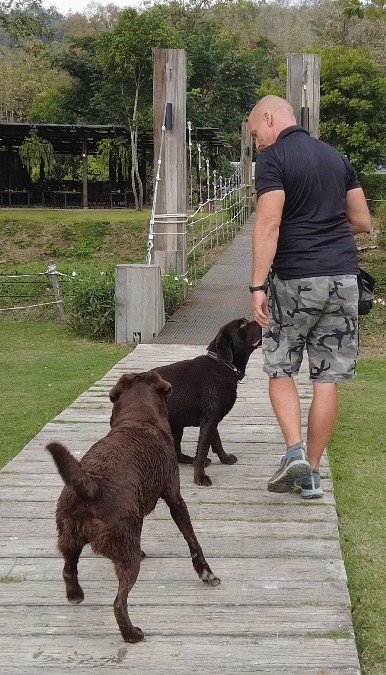
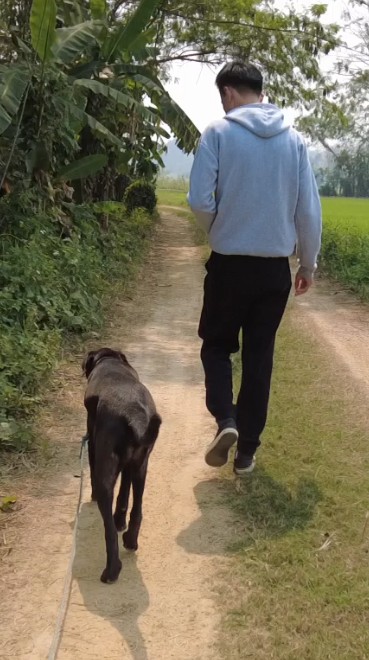
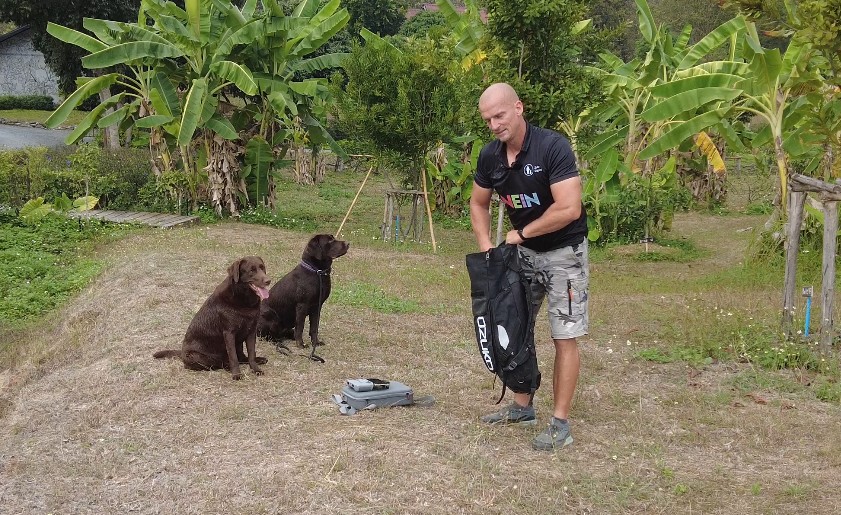
Breed crafts advantage. Generations of selective breeding have honed specialist abilities, from hounds reading chemical stories in scent trails to herders predicting movement with uncanny visual accuracy.
Age-Related Changes in Sensory Integration
Puppy Development: Building Sensory Connections
The first 16 weeks of a puppy’s life represent a critical period for sensory development and integration. During this window, neural connections form at an astounding rate, establishing patterns that will influence perception and behavior throughout life.
Week-by-Week Sensory Milestones:
- Weeks 0-2: Primarily tactile and olfactory world
- Weeks 2-3: Eyes open, beginning visual integration
- Weeks 3-4: Ear canals open, auditory processing begins
- Weeks 4-8: Rapid sensory integration development
- Weeks 8-16: Refinement and environmental calibration
Supporting appropriate sensory development during these stages means providing graduated exposure to diverse stimuli while avoiding overwhelming experiences. The goal is building confident, flexible sensory processing—not just habituation to specific stimuli.
Senior Dogs: Compensatory Strategies and Adaptations
As dogs age, sensory decline doesn’t happen uniformly. Understanding how aging affects sensory integration can help you support your senior dog’s quality of life.
Common Age-Related Changes:
- Vision often declines first, particularly in low light
- High-frequency hearing loss typically follows
- Olfaction usually remains strongest longest
- Processing speed for multi-sensory integration slows
Natural Compensatory Mechanisms: Senior dogs develop remarkable adaptations:
- Increased reliance on routine and spatial memory
- Enhanced use of remaining strong senses
- Greater dependence on contextual cues
- Behavioral modifications to gather more sensory information
You might notice your older dog sniffing more deliberately or moving more slowly through familiar spaces—they’re gathering additional sensory data to compensate for declining primary senses.
Supporting Senior Sensory Health:
- Maintain consistent environmental layouts
- Use multi-sensory cues for important communications
- Provide additional lighting for vision support
- Speak clearly and face your dog when giving commands
- Continue mental stimulation through scent work
Environmental Factors Affecting Sensory Integration
How Surroundings Shape Sensory Processing
Your dog’s environment profoundly influences how their senses work together. Temperature, humidity, air pressure, and even electromagnetic fields can affect sensory accuracy and integration efficiency.
Weather and Atmospheric Effects:
- High humidity enhances scent particle suspension, improving olfactory detection
- Cold temperatures can reduce scent volatility but improve sound transmission
- Barometric pressure changes affect inner ear pressure, potentially influencing balance and spatial awareness
- Wind direction and speed dramatically impact both olfactory and auditory processing
Understanding these effects helps explain why your dog might seem “off” on certain days or excel at training in specific weather conditions.
Urban vs. Rural Sensory Landscapes: City dogs develop different sensory processing strategies than their country cousins:
- Urban dogs often show enhanced selective attention, filtering relevant signals from high background noise
- Rural dogs may maintain broader sensory awareness, detecting subtle changes in quieter environments
- Transition between environments can temporarily disrupt sensory integration patterns
Creating Sensory-Friendly Spaces
Designing your home environment to support healthy sensory integration can reduce stress and improve your dog’s overall well-being.
The Calm Zone Concept:
- Provide a quiet space with minimal sensory stimulation for decompression
- Use soft, non-reflective surfaces to reduce visual and auditory echoes
- Maintain consistent, mild scents (avoid strong cleaners or air fresheners)
- Ensure comfortable temperature and lighting levels
Enrichment Through Controlled Complexity:
- Rotate toys with different sensory properties (textures, sounds, scents)
- Create “sniff gardens” with dog-safe plants for olfactory exploration
- Use puzzle feeders that engage multiple senses
- Provide varied textures for tactile exploration

Practical Applications for Everyday Life
Reading Your Dog’s Sensory State
Learning to recognize when your dog is experiencing sensory overload, seeking sensory input, or operating in optimal sensory balance transforms daily interactions.
Signs of Optimal Sensory Integration:
- Smooth transitions between activities
- Appropriate responses to environmental changes
- Ability to maintain focus despite mild distractions
- Relaxed body language with alert awareness
Red Flags for Sensory Challenges:
- Sudden startling or freezing
- Inability to settle after activity changes
- Excessive scanning or hypervigilance
- Avoidance of specific sensory experiences
Sensory-Based Solutions to Common Problems
Leash Reactivity: Often stems from sensory overload combined with restricted movement options. Solutions include:
- Pre-walk sniffing sessions to fulfill olfactory needs
- Visual barriers (like bandanas) to reduce visual triggers
- Calming auditory inputs (like white noise apps during walks)
- Gradual desensitization using controlled sensory exposure
Separation Anxiety: Frequently involves disrupted sensory expectations. Helpful approaches:
- Leave scent articles with your smell
- Provide auditory comfort through calming music or recorded voice
- Maintain visual access to familiar spaces
- Create predictable sensory routines around departures
Resource Guarding: Often intensified by sensory hypersensitivity around valued items:
- Teach trading behaviors using higher-value sensory rewards
- Reduce environmental sensory competition during feeding
- Build positive associations through multi-sensory enrichment
- Address underlying sensory anxieties through systematic desensitization
The Social Dimension: Multi-Sensory Communication
How Dogs Read Each Other
When dogs meet, they engage in a complex multi-sensory evaluation that happens in seconds. Understanding this process helps you facilitate better dog-to-dog interactions.
The Greeting Sequence:
- Visual Assessment (10-30 feet away): Body posture, tail position, gait pattern
- Auditory Information (throughout): Vocalizations, breathing patterns, movement sounds
- Olfactory Investigation (close contact): Direct sniffing of key information zones
- Tactile Exploration (if permitted): Play bows, muzzle touches, body contact
Each sense provides unique information that, when integrated, creates a complete social picture. Disrupting this sequence—like preventing sniffing—forces dogs to make social decisions with incomplete information.
Reading Human Emotions Through Integrated Senses
Your dog’s ability to read your emotions involves sophisticated multi-sensory integration that science is only beginning to understand.
The Human-Dog Sensory Bond:
- Dogs can detect chemical changes in human sweat associated with different emotions
- They recognize emotional expressions across human faces better than most primates
- Voice tone and breathing patterns provide additional emotional information
- Even subtle body tension changes are detected through visual and possibly electromagnetic sensing
This remarkable ability isn’t just one sense working overtime—it’s the seamless integration of multiple inputs creating an emotional radar that often seems almost supernatural. 🧡
Advanced Training: Sport and Working Applications
Scent Work and Nose Sports
Modern dog sports increasingly recognize the importance of multi-sensory integration, even in seemingly single-sense activities.
Competition Scent Work Strategies:
- Use visual markers to help dogs organize search patterns
- Incorporate auditory cues for area changes or time warnings
- Develop “alert” behaviors that engage multiple senses
- Train in varied sensory environments to build adaptability
Tracking and Trailing Distinctions:
- Tracking emphasizes ground disturbance (visual/tactile) plus scent
- Trailing focuses primarily on airborne scent with environmental navigation
- Both require integration of wind patterns, terrain changes, and scent aging
- Successful dogs fluidly shift between sensory strategies based on conditions
Agility and Multi-Sensory Coordination
Agility might seem like a primarily visual sport, but successful dogs integrate multiple senses for peak performance.
Sensory Elements in Agility:
- Visual: Obstacle recognition, handler position, course flow
- Auditory: Verbal cues, foot falls for timing, equipment sounds
- Proprioceptive: Body position awareness, surface grip, balance
- Vestibular: Turning forces, jumping arcs, tunnel navigation
Training programs that acknowledge all these sensory components produce more confident, faster, and safer performances.
Health and Medical Considerations
When Sensory Integration Goes Wrong
Medical conditions can disrupt normal sensory integration, leading to behavioral changes that might seem unrelated to health issues.
Conditions Affecting Sensory Processing:
- Hypothyroidism: Can dull all senses and slow integration speed
- Cognitive Dysfunction Syndrome: Disrupts sensory processing and memory integration
- Inner Ear Infections: Affect balance and spatial awareness beyond just hearing
- Diabetes: Can alter scent detection abilities and visual acuity
- Chronic Pain: Creates sensory hypersensitivity and altered behavioral responses
Regular veterinary checkups should include sensory function evaluation, especially when behavioral changes occur without obvious environmental causes.
Supporting Sensory Health Through Nutrition
Emerging research reveals specific nutrients that support sensory function and neural integration:
Key Nutrients for Sensory Health:
- Omega-3 Fatty Acids: Support neural membrane health and signal transmission
- Antioxidants (Vitamins E, C): Protect sensory organs from oxidative damage
- B-Complex Vitamins: Essential for nerve function and neurotransmitter production
- Zinc: Critical for olfactory function and wound healing in sensory tissues
- DHA: Particularly important for visual development and maintenance
Discussing targeted nutritional support with your veterinarian can help maintain optimal sensory function throughout your dog’s life.
The Future of Canine Sensory Understanding
Emerging Research and Technologies
Scientific understanding of canine sensory integration is rapidly expanding, with new discoveries reshaping our approach to dog behavior and training.
Current Research Frontiers:
- Brain imaging studies revealing real-time sensory processing patterns
- Investigation of previously unknown sensory capabilities (magnetic field detection, infrared sensitivity)
- Development of sensory-based anxiety treatments
- Exploration of breed-specific sensory training protocols
- Studies on environmental effects on sensory development
Technological Applications:
- Wearable devices monitoring sensory stress indicators
- Virtual reality training environments for controlled sensory exposure
- Apps providing tailored sensory enrichment programs
- Diagnostic tools for early detection of sensory decline
Implications for the Human-Canine Bond
As we deepen our understanding of how dogs perceive and process their world, we’re discovering new ways to strengthen our interspecies connection.
Building Better Relationships Through Sensory Awareness:
- Recognizing and respecting your dog’s sensory needs
- Communicating in ways that align with their perceptual strengths
- Creating environments that support sensory well-being
- Developing training methods that honor sensory individuality
This isn’t just about making life easier for our dogs—it’s about building deeper, more meaningful relationships based on true understanding rather than anthropomorphic assumptions.
Conclusion: Is Multi-Sensory Understanding Right for You and Your Dog?
As we’ve explored throughout this guide, understanding multi-sensory integration isn’t just academic knowledge—it’s a practical tool that can transform your relationship with your dog. Whether you’re dealing with behavioral challenges, pursuing dog sports, or simply wanting to provide the best possible life for your furry friend, sensory awareness opens new doors of possibility.
Consider how this knowledge might benefit your specific situation:
- Does your dog struggle with certain environments or situations?
- Are you looking to enhance training effectiveness?
- Do you want to better understand your dog’s unique personality and needs?
- Are you supporting a senior dog through age-related changes?
Every dog is a sensory individual, shaped by genetics, experience, and environment. By understanding how your particular dog processes and integrates sensory information, you’re not just becoming a better trainer or owner—you’re becoming a better partner in their life journey.
Remember, this sensory symphony plays out every moment of your dog’s life. Each walk, each training session, each quiet evening at home is an opportunity to observe, understand, and support your dog’s remarkable sensory world. The question isn’t whether multi-sensory understanding is important—it’s how quickly you can start applying these insights to enrich your dog’s life and deepen your mutual bond.
Your dog experiences a world far richer and more complex than we once imagined. Now that you understand the symphony of senses orchestrating their every moment, you’re equipped to be the conductor they need—guiding, supporting, and celebrating the magnificent sensory being who shares your life. 🐾
Next Steps:
- Observe your dog’s sensory preferences in different contexts
- Experiment with multi-sensory training techniques
- Create sensory enrichment opportunities tailored to your dog
- Consult with professionals about any sensory-related concerns
- Continue learning about this fascinating aspect of canine cognition
The journey into your dog’s sensory world is just beginning, and every discovery brings you closer to the kind of understanding that transforms good relationships into extraordinary ones.

